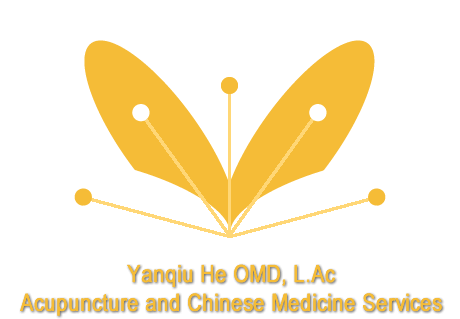11 Jan 5 Facts About Traditional Chinese Medicine
Traditional Chinese medicine (TCM) is sometimes thought of as mystical. However, Chinese medicine specialists have existed for thousands of years. For example, acupuncture treatment was practiced in China about 2,000 years ago while Chinese herbal medicine is about 3,000 years old. Over this time, the practice and theory of TCM has been refined so that modern patients receive the benefit of centuries of experience.
Here are five characteristics of TCM:
Daoist Theory
You may be familiar with the Yin-Yang symbol. The symbol is intended to illustrate balance. Whether it be light balancing dark, hot balancing cold, or wet balancing dry, the two interlocking semi-circular swirls embody the Daoist principle of balance in all things, including the body.
TCM uses this concept of balance as its guiding principle. In TCM, disease is a result of imbalance and TCM seeks to restore balance through traditional treatments.
Holistic
The origin of the term holism arises from a South African military leader and diplomat. He coined the phrase to explain his theory that a system that may appear to be whole will depend on the characteristics of its parts. Therefore, there is an interconnectedness between the whole and the parts that requires an examination of the parts to include the whole, and vice versa.
When applied to medicine, holism avoids focusing on treating symptoms. Rather, a patient’s emotional, mental, and spiritual health can all have a role in treatment.
In TCM, this is most apparent in the use of multiple modes of treatment. Western medicine may focus strictly on, for example, prescription medications to relieve a symptom. However, TCM seeks to determine the underlying cause of the symptom and treat it with acupuncture, Chinese herbal medicine, exercise, massage, diet, and other treatments.
Energy Meridians
TCM texts often include maps of the body’s meridians. In TCM, energy called qi (also spelled chi) flows through the body and affects its function. Meridians are locations on the body where qi can be accessed through acupuncture, acupressure, or massage. TCM specialists use these meridians to treat diseases by redirecting qi through the body. A typical acupuncture treatment uses between five and 20 needles to access meridians.
If you prefer a more scientific explanation, modern science has determined that the meridians mapped out by TCM practitioners correspond to neural pathways and nerve bundles. For science-minded patients, this means that acupuncture, acupressure, and massage along meridians stimulates or disrupts neural pathways to aid in pain relief and treatment.
Natural Pharmaceuticals
Chinese herbal medicine differs from pharmaceuticals in its origins. Where Chinese herbal medicine is derived from plants, animals, fungus, and other natural sources, Western pharmaceuticals are synthesized from chemicals.
However, this does not mean that Chinese herbal medicine is inferior to Western pharmaceuticals. In fact, pharmaceuticals have been developed using Chinese herbs for treatment of asthma, hay fever, hepatitis, and cancer. Drug manufacturers have engaged with TCM practitioners to create a system for classifying Chinese herbal medicines so that they can be further researched for their potential use in Western drugs. Pharmaceutical companies have recognized that the centuries of experience with these Chinese herbs can lead to treatments, or improvements in treatment, of many diseases and conditions.
Prevention
Like Western medicine, TCM emphasizes prevention as much as, or more than, treatment. A balanced diet, massage emphasizing meridians, and regular exercise, such as tai chi, are used to regulate the balance and flow of qi in the body to prevent disease. Even if you are precluded to more Western thinking, every Western doctor would agree that diet and exercise can have an enormous impact on health.
Chinese herbal medicine can also be used preventatively, with herbal teas used as supplements to a patient’s regular diet. For those who find medicinal herbal teas to be too strong in flavor or taste, many Chinese herbs can be found in powdered form inside gelatin capsules like many Western medications. In this form, Chinese herbal medicines can be more convenient to take and less subject to the tastes of the patient.
TCM has been recognized as having benefits for many patients, including those who have received no benefits from Western medicine or suffer side effects from Western treatments. Moreover, the idea of balance and holism appeals to many patients who feel that Western medical treatments focus too much on symptoms and not enough on causes.


Sorry, the comment form is closed at this time.